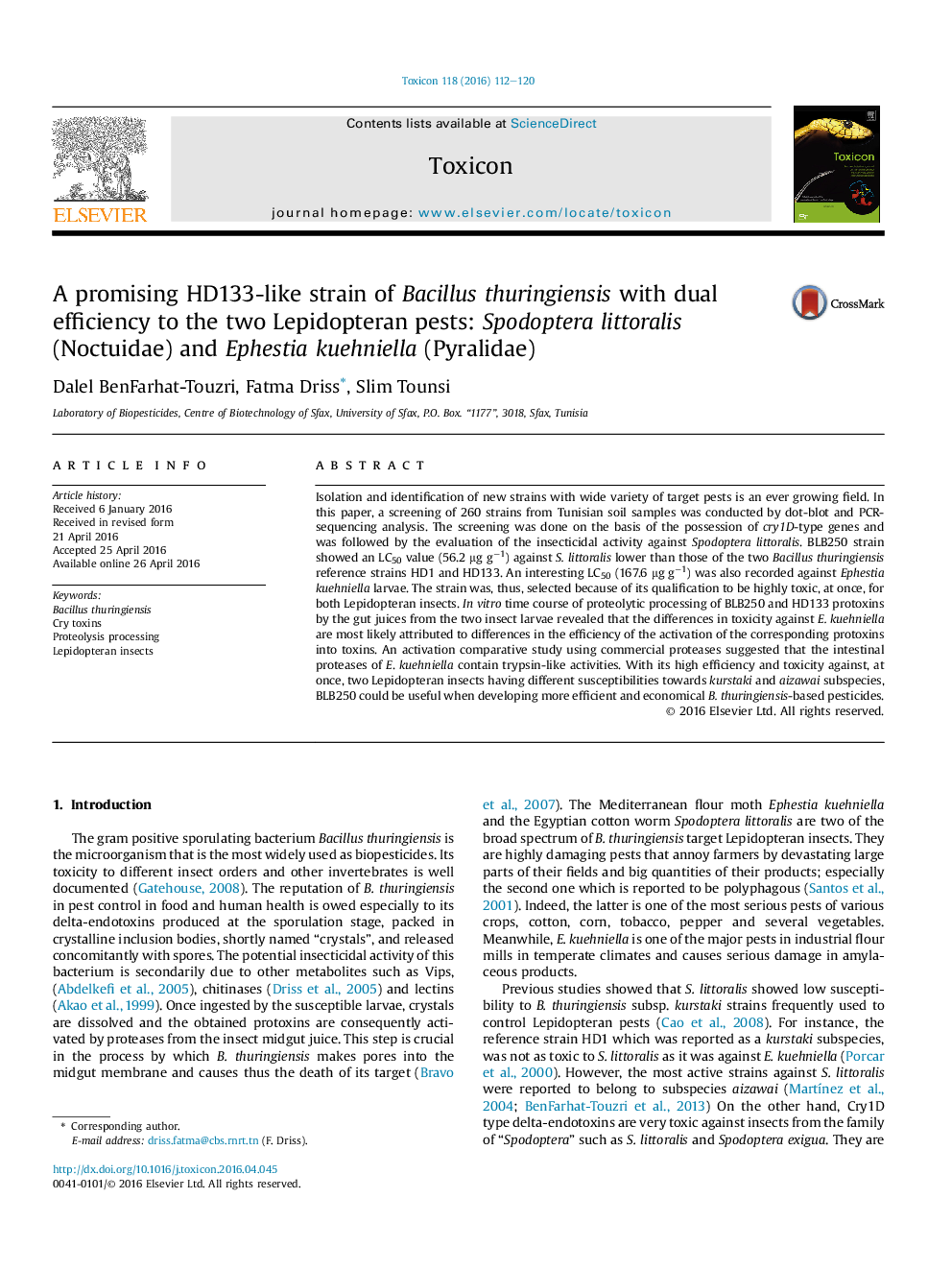| Article ID | Journal | Published Year | Pages | File Type |
|---|---|---|---|---|
| 2064095 | Toxicon | 2016 | 9 Pages |
•A promising Bacillus thuringiensis subsp. aizawai-like strain.•Dual efficiency against two Lepidopteran pests having different susceptibilities.•The high efficiency was attributed to differences in the protoxin activation processes.
Isolation and identification of new strains with wide variety of target pests is an ever growing field. In this paper, a screening of 260 strains from Tunisian soil samples was conducted by dot-blot and PCR-sequencing analysis. The screening was done on the basis of the possession of cry1D-type genes and was followed by the evaluation of the insecticidal activity against Spodoptera littoralis. BLB250 strain showed an LC50 value (56.2 μg g−1) against S. littoralis lower than those of the two Bacillus thuringiensis reference strains HD1 and HD133. An interesting LC50 (167.6 μg g−1) was also recorded against Ephestia kuehniella larvae. The strain was, thus, selected because of its qualification to be highly toxic, at once, for both Lepidopteran insects. In vitro time course of proteolytic processing of BLB250 and HD133 protoxins by the gut juices from the two insect larvae revealed that the differences in toxicity against E. kuehniella are most likely attributed to differences in the efficiency of the activation of the corresponding protoxins into toxins. An activation comparative study using commercial proteases suggested that the intestinal proteases of E. kuehniella contain trypsin-like activities. With its high efficiency and toxicity against, at once, two Lepidopteran insects having different susceptibilities towards kurstaki and aizawai subspecies, BLB250 could be useful when developing more efficient and economical B. thuringiensis-based pesticides.
Graphical abstractFigure optionsDownload full-size imageDownload as PowerPoint slide
